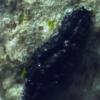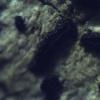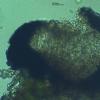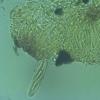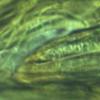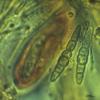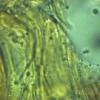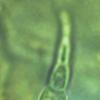
20-12-2025 23:08
Patrice TANCHAUDBonsoir, récolte sur sol sablonneux dans l'arri�

21-12-2025 09:32
Hello.A tiny ascomycete found embedded in wood in

20-12-2025 15:47
Mirek GrycHi.These grew on pine wood that was heavily covere

18-12-2025 21:17
Pol DebaenstThe identification took me to Byssonectria deformi

15-12-2025 07:09
 Danny Newman
Danny Newman
indet. Rutstroemiaceae sp. on unk. fallen leavesMc

19-12-2025 10:10
Patrice TANCHAUDBonjour, récolte réalisée en milieu dunaire, a

18-12-2025 17:23
 Bruno Coué
Bruno Coué
Bonjour,je serais heureux d'avoir votre avis sur c
 Buenos dias a todos, sobre Ceratonia siliqua he encontrado estos histerotecios que siguiendo las claves Eric W.A. Boehm me lleva a Gloniella spp, pero cuando entro en las claves de Gloniella no me encaja con ninguna especie, a ver si me podeiss decir si voy por buen camino:
Buenos dias a todos, sobre Ceratonia siliqua he encontrado estos histerotecios que siguiendo las claves Eric W.A. Boehm me lleva a Gloniella spp, pero cuando entro en las claves de Gloniella no me encaja con ninguna especie, a ver si me podeiss decir si voy por buen camino:Acoma histerotecio carbonaceo, de 0,5 a 1,5mm de largo, elipsoide, no esta logintudinalmente estriado, con surco longitudinal que se ensancha en la madurez, en grupos y juntadose con otros.
Hamatecio, forma una matriz gelatinosa, parafisis de 1 a 2 micrómetros de ancho, no aprecio septos ni ramificaciones.
Ascos clavados, octosporicos entre 58 y 68 de largo X 12 y 17 de ancho.
Ascosporas fragmosporas, fusiformes hialinas siempre he contado 5 septos, entre 20 y 28 largo X 3 y 4 ancho micrómetros.
alguna idea?
gracias
Angel
Hi Angel,
The closest species are pteridicolous, and it's slightly different. So that one on Ceratonia is probably new.
Alain
for me it looks like a lichen: the appearance of the hysterothecium, the ascus structure, the iodine reaction, the algae which are shown on the first two pictures. But maybe I'm wrong... I'm not a specialist...
Best, Uwe
Hi Uwe,
not impossible as you said. I didn't see really the idione reaction on Angel's photo, but the question must be put.
Angel, can you check there isn't thallus ?
Alain

haciendo secciones transversales no aprecio ningun talo, me parece el aspecto de un histerotecio de Hysterial tipico pero tampoco soy ningún especialista.
gracias por vuestras opiniones.
un saludo
Angel
I see on picture six a red reaction of the ascus, similar to reactions which I saw in lichens. I didn't know these red reaction from other members of the Hysteriaceae. That's why I thought of a lichen. But mabye I'm wrong...
Best, Uwe
You're probably right Uwe. The genus Opegrapha could be a good way for research. For example : http://www.afl-lichenologie.fr/Photos_AFL/Photos_AFL_O/Texte_O/Opegrapha_niveoatra.htm

Gracias por vuestra ayuda Uwe, Alain
un saludo
Angel

